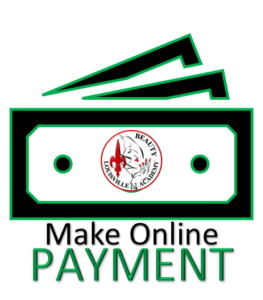Mục tiêu
Đây là bài viết tổng hợp về định nghĩa, nguồn gốc / lịch sử, trạng thái hiện tại và tương đối về tình trạng tương lai của ngành công nghiệp móng tay. Đây là bài viết tổng quan về chủ đề Công nghiệp Nail bao gồm Finger Nail, Toe Nail, Manicure, Pedicure, Artificial Tip.
Động lực
Với sự phổ biến và sự phổ biến của ngành công nghiệp móng ngày nay, không nhiều người thực sự nắm bắt nguồn gốc / lịch sử cũng không có nhiều kiến thức về ngành này. Bài viết này được viết với một suy nghĩ chia sẻ kiến thức quan trọng này và cho phép tất cả chúng ta nhận ra thị trường này đã nhảy vọt từ những gì nó đã được trước đó đến đâu là ngày hôm nay.
Giới thiệu
Tiệm làm móng đã trở thành một đặc điểm chung của các thị trấn, thành phố, khu phố và trung tâm mua sắm ở Hoa Kỳ (Roelofs, & Do, 2012). Ngành công nghiệp móng đã phát triển ở Mỹ trong hai thập kỷ qua (Quach, Nguyen, Doan-Billings, Okahara, Fan, Reynolds, 2008). Yếu tố tăng trưởng nhanh của ngành móng được tìm thấy chủ yếu trong số người nhập cư Việt Nam và số trẻ vị thành niên ở các nước châu Á khác; Những người đã biến đổi ngành công nghiệp làm đẹp và thực hiện thị trường móng chân, móng tay và móng tay giả hợp lý (Federman, Harrington, & Krynski, 2006).
Theo Wahowiak (2015), có hơn 2000 doanh nghiệp được phép làm móng tay và chăm sóc chân tại thành phố New York một mình. Mỹ. Cục Thống kê Lao động (2015) ước tính có khoảng 86.900 thợ làm móng tay và chuyên gia trị liệu tại Mỹ vào năm 2012; Và với tốc độ tăng trưởng, con số ước tính sẽ tăng lên khoảng 100, 400 vào năm 2022. Số lượng và ước tính của Mỹ. Văn phòng lao động đã được chứng minh là ở phía bên thấp; Hoặc bù đắp rất nhiều so với số lượng hiện tại vào năm 2015. Tại California, hiện có hơn 97.000 thợ làm móng; Và 80% trong số các kỹ thuật viên này là người nhập cư Việt Nam (California Healthy Nails Salon Collaborative, 2015).
Dựa trên Tạp chí Nails vào năm 2010, có từ 350.000 đến 376.000 nhân viên kỹ thuật móng làm việc tại Mỹ (NAILS, 2010). Phần lớn các dịch vụ làm móng được chia làm hai loại: 1) các dịch vụ làm móng tay, 2) dịch vụ làm móng với các dịch vụ mỹ phẩm bổ sung khác như waxing và Spa (Alaves, Sleeth, Thiese, & Larson, 2013). Sự phát triển của ngành công nghiệp móng ở Mỹ liên tục ở mức đáng kể và trong phạm vi số lượng lớn cả về lực lượng lao động và doanh nghiệp vì lý do tốt; Đặc biệt là trong số những người nhập cư gốc Á, đặc biệt là người Việt Nam.
Tại sao ngành công nghiệp móng lại hấp dẫn?
 Sự thu hút của ngành móng bắt nguồn từ hai khía cạnh chính: 1) sở hữu kinh doanh và 2) việc tìm việc nhanh và dễ dàng (Quách, Nguyễn, Doãn-Billings, Okahara, Fan, & Reynolds, 2008, Lý, & Tufts University, 2003 , Wahowiak, năm 2015). Trong vài thập kỷ qua, Quách, Nguyễn, Doan-Billings, Okahara, Fan và Reynolds, (2008) chỉ ra rằng quyền sở hữu và kinh doanh móng tay đã tăng gấp ba lần; Và đáng kể cho các tài khoản và bao gồm một số lượng lớn lao động nhập cư. Các kỹ thuật viên móng tay được ước tính của Việt Nam tăng lên 10 lần trong khoảng thời gian từ 1987 đến 2002 (Federman, Harrington, và Krynski, 2006).
Sự thu hút của ngành móng bắt nguồn từ hai khía cạnh chính: 1) sở hữu kinh doanh và 2) việc tìm việc nhanh và dễ dàng (Quách, Nguyễn, Doãn-Billings, Okahara, Fan, & Reynolds, 2008, Lý, & Tufts University, 2003 , Wahowiak, năm 2015). Trong vài thập kỷ qua, Quách, Nguyễn, Doan-Billings, Okahara, Fan và Reynolds, (2008) chỉ ra rằng quyền sở hữu và kinh doanh móng tay đã tăng gấp ba lần; Và đáng kể cho các tài khoản và bao gồm một số lượng lớn lao động nhập cư. Các kỹ thuật viên móng tay được ước tính của Việt Nam tăng lên 10 lần trong khoảng thời gian từ 1987 đến 2002 (Federman, Harrington, và Krynski, 2006).
Từ việc tìm kiếm các quan điểm, kỹ thuật viên làm móng hấp dẫn vì những lý do sau: 1) linh hoạt trong giờ làm việc của tiệm làm tóc, 2) dễ dàng với quá trình làm việc, và 3) khả năng nhanh trong việc kiếm tiền (Wahowiak, 2015). Công việc của Nail đặc biệt phù hợp với người nhập cư vì 1) chương trình đào tạo ngắn, không tốn kém và dễ dàng, 2) lịch trình linh hoạt làm việc xung quanh các bà mẹ nhập cư có nghĩa vụ gia đình, và 3) ít mong đợi về trình độ tiếng Anh (Lý, và Tufts University, 2003) . “Làm công việc thẩm mỹ tại tiệm làm móng, bạn không cần phải có trình độ tiếng Anh cao” (trang 2), và rào cản ngôn ngữ là một thách thức đối với hầu hết người nhập cư tuổi từ trung niên trong quá trình tìm việc làm (Wahowiak, 2015).
Ví dụ về sự dễ dàng với quá trình lên máy bay (Wahowiak, 2015), và đào tạo ngắn, không tốn kém và dễ dàng (Lý, & Tufts University, 2003) được trình bày qua thủ tục Barbering của Tiểu bang California. Do nhu cầu lớn về kỹ thuật viên móng tay của người Việt Nam nên tiểu bang California đã đưa người Việt Nam trở thành một trong những lựa chọn ngôn ngữ chính cho việc kiểm tra giấy phép kỹ thuật viên móng (BBC, 2006); Và điều này cũng dẫn đến sự sẵn có của đào tạo và hướng dẫn của Việt Nam.
Theo quan điểm của quyền sở hữu kinh doanh móng tay, ngành móng tay là một sự phù hợp tuyệt vời cho những ai quan tâm cao đến quyền sở hữu và kiểm soát quyền sở hữu sắc đẹp; Vì lĩnh vực móng đã cho thấy sự tăng trưởng kinh tế nhất quán và đáng kể trong những năm gần đây (Gilels, Gorman, Huang, Liou, Mendiratta, & Philip, 2008). Có một số lượng ngày càng tăng đáng kể các cửa hiệu và trường học thẩm mỹ của Việt Nam; Một dấu hiệu và chỉ số mạnh mẽ rằng móng tay đã trở thành một nghề hơn là một công việc (Gilels, Gorman, Huang, Liou, Mendiratta, & Philip, 2008). Nghiên cứu này là quan tâm và tập trung vào các tác động của ngành công nghiệp móng nói chung, và các dịch vụ móng cụ thể có trên một tiệm móng cụ thể kinh doanh.
Lịch sử của tiệm Nail / Công nghiệp
Theo Walsh (2012), tiệm móng tay là những tiệm nail được gọi là “móng tay hiện đại” được thành lập và bắt nguồn từ đầu những năm 1900 ở Hoa Kỳ. Vào năm 1910, thành phố New York có một khu chăm sóc sắc đẹp được gọi là “Phòng chăm sóc chân”, nơi các cá nhân tầng lớp  lao động được điều trị chân (NYT, 1910). Đối với tầng lớp cao hơn, những người có thu nhập lớn hơn; Các phương pháp thay thế và các dịch vụ làm móng tốt hơn được cung cấp tại tiệm salon Elizabeth Arden Red Door trong thời gian làm móng tay (Elizabeth Arden, 2015). Cũng trong thời gian đó, viết về cách làm móng đã bắt đầu phổ biến rộng rãi như những tác phẩm của Woodbury bao gồm: 1) Văn hoá sắc đẹp (Woodbury, 1910), và 2) Chăm sóc bàn tay (Woodbury, 1915).
lao động được điều trị chân (NYT, 1910). Đối với tầng lớp cao hơn, những người có thu nhập lớn hơn; Các phương pháp thay thế và các dịch vụ làm móng tốt hơn được cung cấp tại tiệm salon Elizabeth Arden Red Door trong thời gian làm móng tay (Elizabeth Arden, 2015). Cũng trong thời gian đó, viết về cách làm móng đã bắt đầu phổ biến rộng rãi như những tác phẩm của Woodbury bao gồm: 1) Văn hoá sắc đẹp (Woodbury, 1910), và 2) Chăm sóc bàn tay (Woodbury, 1915).
Sự bắt đầu của tiệm nail hiện đại đánh dấu sự bắt đầu của sáng chế liên quan đến móng. Bằng sáng chế của Hoa Kỳ (năm 1915) về lá chắn ngón tay là một ví dụ điển hình về các sáng chế liên quan đến móng; Nơi mà các bằng sáng chế được nộp về lá chắn móng tay (sản phẩm sản xuất móng đổi màu mà cung cấp một móng tay sạch sẽ và rõ ràng). Trong thập kỷ tiếp theo, ngành mỹ phẩm làm móng sẽ có bước nhảy vọt khi nhiều phụ nữ nhập cư đến Hoa Kỳ và mở các tiệm nail (Federman, Harrington, & Krynski, 2006; NAILS, 2010, California Healthy Nails Salon Collaborative, 2015).
Tăng trưởng trong kinh doanh Salon Nail
 Theo Tạp chí Nail, ngành mỹ phẩm làm móng là một trong những ngành phát triển nhanh nhất trong ngành làm đẹp có quy mô thị trường trên 7 tỷ đô la Mỹ (NAILS, 2010; NAILS, 2013). Mức tăng trưởng của nhân viên làm móng (kỹ thuật viên) được ước tính gần 20% từ năm 2008 đến năm 2018 (Walsh, 2012), vượt xa tốc độ tăng trưởng bình quân của các nghề khác trong phạm vi 10% (Lacey, & Wright, 2009); Khi những con số này có khả năng ở phía dưới của dự toán dựa trên Hợp tác Salon Nails của California Healthy Nails (2015).
Theo Tạp chí Nail, ngành mỹ phẩm làm móng là một trong những ngành phát triển nhanh nhất trong ngành làm đẹp có quy mô thị trường trên 7 tỷ đô la Mỹ (NAILS, 2010; NAILS, 2013). Mức tăng trưởng của nhân viên làm móng (kỹ thuật viên) được ước tính gần 20% từ năm 2008 đến năm 2018 (Walsh, 2012), vượt xa tốc độ tăng trưởng bình quân của các nghề khác trong phạm vi 10% (Lacey, & Wright, 2009); Khi những con số này có khả năng ở phía dưới của dự toán dựa trên Hợp tác Salon Nails của California Healthy Nails (2015).
Để dễ dàng hình dung sự tăng trưởng trong ngành móng, Walsh (2012) so sánh với kinh doanh của Starbucks như sau: “đối với mỗi cửa hàng bán lẻ của Starbucks ở Hoa Kỳ, có hơn bốn tiệm nail”. Các yếu tố giải thích sự bùng nổ của ngành móng là: 1) tăng sự chú ý đến việc chăm sóc móng tay cá nhân, 2) chuyển động đột ngột ở phụ nữ trong thị trường lao động, và 3) sự xuất hiện của tiệm làm móng tay giá rẻ và tiện lợi (Walsh, 2012) . Tiệm làm móng được sử dụng để trở thành một dịch vụ sang trọng; Và ngày nay nó là về giá cả phải chăng, chi phí thấp, điều trị và nuông chiều bản thân, và dịch vụ dễ tiếp cận (Greenhouse, 2007).
Các loại dịch vụ làm móng
Trang trí móng hiện đại ngày nay là ngành công nghiệp lớn bao gồm các mỹ phẩm làm móng khác nhau như: 1) chất làm móng, 2) đánh bóng, 3) phần mở rộng, 4) móng tay nhân tạo / điêu khắc, và 5) trang trí móng tay (Madnani, & Khan, 2012) . Bất kỳ thủ tục điều trị móng nào bao gồm một số bước, và các ứng dụng của một loạt các sản phẩm; Mà Madnani, và Khan (2012) như sau:
| Services |
Service Description |
| Manicure / Pedicure |
1. Làm sạch lớp sơn trước bằng cách loại bỏ hóa chất.
2. Cắt móng theo chiều dài mong muốn
3. Ngâm tay / chân trong nước ấm với chất tẩy nhẹ để loại bỏ bẩn
4. Lấy da thô ráp hoặc sẹo lồi dày
5. Xóa lớp biểu bì
6. Móng móng mịn
7. Massage chân / tay với kem nhẹ nhàng
8. Sơn móng |
| Nail Hardener |
1. Làm sạch bề mặt móng
2. Áp dụng lớp phủ trên móng (để tăng cường móng) |
| Polishes |
Áp dụng sơn móng cho các mục đích sau:
1) Làm đẹp
2) Củng cố móng dễ gãy
3) Che giấu hoặc ngụy trang những bất thường hoặc đổi màu bề mặt móng |
| Polishes removal |
1) Xóa sơn bằng Acetone hoặc dung dịch sơn móng tay không chứa acetone
2) Làm móng tay móng hoặc móng tay cho ứng dụng đánh bóng mới |
| Extension / Artificial / sculpted Nails |
điêu khắc Có nhiều cách và phong cách:
1) Nails tips: Áp dụng hoặc dán các tấm nhựa lên đầu móng thật và đánh bóng trên đầu.
2) Đinh móng: Dùng acrylic hoặc gel trên móng hiện tại. Quá trình này liên quan đến một hỗn hợp bột và dung dịch; Áp dụng cho móng.
A. Arcylic Nails: hỗn hợp của chất lỏng ethyl methacrylate và bột poly-methacrylate, kết quả trong một hỗn hợp polymetized được mouldable trong hình dạng mong móng.
B. Gel móng tay: hỗn hợp bột và gel lỏng kèm theo tiếp xúc với tia cực tím để tạo móng mở rộng. Giải pháp này giống như nhựa nha khoa. Sức mạnh và độ bền của móng gel là tuyệt vời đến nỗi cách duy nhất để loại bỏ móng Gel là tự tay buff nó đi |
| Nail Decorations |
Nails trang trí có nhiều hình thức và phong cách:
1) Nail Arts: Áp dụng nghệ thuật đánh bóng móng; Vẽ tay và tạo mẫu sử dụng sơn móng tay
2) Nail air brush: Áp dụng sơn bàn chải không khí trên bề mặt móng, và niêm phong lớp phủ trên
3) Nail nghệ thuật điêu khắc: áp dụng phong cách làm móng và nghệ thuật sử dụng acrylic hoặc gel |
Theo Eckstein và Nguyen (2011), dịch vụ móng tay là một nghề mới tương đối mới. Bộ Lao động Hoa Kỳ trích dẫn một loại chăm sóc móng như là một phân loại việc làm vào những năm 1980, và các tiệm nail như là một phân loại kinh doanh được thêm vào danh sách của Hoa Kỳ Cục Thống kê Lao động danh sách các loại nghề nghiệp (Eckstein & Nguyen, 2011). Việc chăm sóc móng tay chuyên nghiệp luôn là một dịch vụ bổ sung trong tiệm làm tóc (American Salon., 2005); Phát triển thành những tiệm nail tự đứng.
Nail Technician là ai?
 Các dịch vụ móng được thực hiện bởi chuyên viên làm móng, được gọi là kỹ thuật viên làm móng (Alaves, Sleeth, Thiese, & Larson, 2013, BBC, 2006; NAILS, 2010). Các kỹ thuật viên làm móng nói đến các chuyên gia được chính quyền bang cấp phép; Những người được kiểm tra và đồng ý thực hiện các thủ tục cấp phép làm móng (Walsh, 2012). Yêu cầu về cấp phép móng tay là khác nhau giữa các tiểu bang và tiểu bang; Nhưng quy trình nói chung bao gồm các yêu cầu như: 1) tuổi cơ bản, 2) mức độ y tế, 3) tiêu chuẩn giáo dục và 4) điểm kiểm tra hoặc kiểm tra tối thiểu (Walsh, 2012).
Các dịch vụ móng được thực hiện bởi chuyên viên làm móng, được gọi là kỹ thuật viên làm móng (Alaves, Sleeth, Thiese, & Larson, 2013, BBC, 2006; NAILS, 2010). Các kỹ thuật viên làm móng nói đến các chuyên gia được chính quyền bang cấp phép; Những người được kiểm tra và đồng ý thực hiện các thủ tục cấp phép làm móng (Walsh, 2012). Yêu cầu về cấp phép móng tay là khác nhau giữa các tiểu bang và tiểu bang; Nhưng quy trình nói chung bao gồm các yêu cầu như: 1) tuổi cơ bản, 2) mức độ y tế, 3) tiêu chuẩn giáo dục và 4) điểm kiểm tra hoặc kiểm tra tối thiểu (Walsh, 2012).
Có các tiêu chuẩn pháp lý cần phải đáp ứng để trở thành một kỹ thuật viên móng được cấp phép bao gồm kiến thức cơ bản về: 1) kỹ thuật làm móng tay, 2) an toàn và sức khoẻ, 3) vi khuẩn và các bệnh truyền nhiễm, 4) các phương pháp vệ sinh hóa học, và 5) quy tắc vệ sinh và quy định (Walsh, 2012). Để làm chủ tiệm làm móng, Walsh (2012) xây dựng một kỹ thuật viên được cấp phép cũng phải có giấy phép kinh doanh chung từ thành phố hoặc tiểu bang để hoạt động như một chủ tiệm làm móng.
Tài Liệu Tham Khảo
Alaves, V. M., Sleeth, D. K., Thiese, M. S., & Larson, R. R. (2013). Characterization of indoor air contaminants in a randomly selected set of commercial nail salons in Salt Lake County, Utah, USA. International Journal of Environmental Health Research, 23(5), 419–433. http://doi.org/10.1080/09603123.2012.755152
Agusthiyar R., & Narashiman, K. (2015). An ETL Based Framework For Data Cleaning In Multi Data Source. International Journal of Applied Engineering Research, 10(4), 1005–10014.
American Salon. (2005). Green Book. Cleveland, Ohio: Advanstar Communications
Brettell, C. B., & K. E. Alstatt (2007). The Agency of Immigrant Entrepreneurs: Biographies of the Self-Employed in Ethnic and Occupational Niches of the Urban Labor Market. Journal of Anthropological Research 63:383–397
California Healthy Nails Salon Collaborative. (2015). About Healthy Nail Salons | California Healthy Nail Salon Collaborative. Retrieved from http://www.cahealthynailsalons.org/what-is-hns/about-healthy-nail-salons/
California State Board of Barbering, Cosmetology (BBC). (2006). Application for examination. Sacramento, CA, USA: California State Board of Barbering and Cosmetology.
Eckstein, S., & Nguyen, T.-N. (2011). The Making and Transnationalization of an Ethnic Niche: Vietnamese Manicurists. International Migration Review, 45(3), 639–674. http://doi.org/10.1111/j.1747-7379.2011.00861.x
Elizabeth Arden, Inc. (2015). ABOUT ELIZABETH ARDEN. Retrieved September 7, 2015, from https://corporate.elizabetharden.com/about-elizabeth-arden/
Federman, M. N., Harrington, D. E. and Krynski, K. J. (2006). “Vietnamese manicurists: Are immigrants displacing natives or finding new nails to polish?” Industrial and Labor Relations. Review, vol. 59, no. 2, pp. 302–318.
Gilels, D., Gorman, A., Huang, P., Liou, J., Mendiratta, A., & Philip, D. (2008). The U.S. Nail Salon Industry. Women & Environments International Magazine, (76/77), 18–21.
Greenhouse, S. (2007, August 19). At Nail Salons, Beauty Treatments Can Have a Distinctly Unglamorous Side. The New York Times. Retrieved from http://www.nytimes.com/2007/08/19/nyregion/19nails.html
Hondagneu-Sotelo, P. (2001) Dome´stica: Immigrant Workers Cleaning and Caring in the Shadows of Affluence. Berkeley: University California Press.
Lacey, A. & Wright, B. (2009) Employment Outlook: 2008-18, MONTHLY LAB. REV., 82, 111.
Ly, M., & Tufts University. (2003). Assessing and communicating occupational health risks to Vietnamese nail salon workers (honors thesis). Medford, MA, USA: Tufts University.
Madnani, N. A., & Khan, K. J. (2012). Nail cosmetics. Indian Journal of Dermatology, Venereology & Leprology, 78(3), 309–317. http://doi.org/10.4103/0378-6323.95445
Min, P. G. (2006). ‘‘Korean Americans.’’ In Asian Americans: Contemporary Trends and Issues. Ed.P. Gap Min. Thousand Oaks, CA: Pine Forge Press. Pp. 230–259.
NAILS. (2010). Industry Statistics. Nails Magazine 2010 Big Book. Torrance, CA: Available from: http://files.nailsmag.com/Market-Research/bb2010–11stats-reprints.pdf
NAILS (2013). Nails magazine 2012-2013. The Big Book. Retrieved from http://files.nailsmag.com/Market-Research/NAILSbb12-13stats.pdf
Nisbet, R., Elder, J., & Miner, G. (2009). Handbook of Statistical Analysis and Data Mining Applications (1 edition). Amsterdam ; Boston: Academic Press.
Roelofs, C., & Do, T. (2012). Exposure Assessment in Nail Salons: An Indoor Air Approach. ISRN Public Health, 1–7. http://doi.org/10.5402/2012/962014
Salon City Inc. (2009). Salon City Reports on Professional Beauty Federation’s Capitol Hill Event. Retrieved September 7, 2015, from http://www.marketwired.com/press-release/salon-city-reports-on-professional-beauty-federations-capitol-hill-event-1200838.htm
The New York Time (NYT). (1910, January 6). TAKE YOUR BUNIONS TO THE FREE CLINIC; New Corporation Will Undertake Also to Kill Your Corns Without Charge. The New York Times. Retrieved from http://query.nytimes.com/gst/abstract.html?res=990CE7D91730E233A25755C0A9679C946196D6CF
Thu Quach, Kim-Dung Nguyen, Doan-Billings, P.-A., Okahara, L., Fan, C., & Reynolds, P. (2008). A Preliminary Survey of Vietnamese Nail Salon Workers in Alameda County, California. Journal of Community Health, 33(5), 336–343. http://doi.org/10.1007/s10900-008-9107-7
U.S. Department of Labor (2015). Occupational Outlook Handbook: : U.S. Bureau of Labor Statistics. Occupational Outlook Handbook, 2014-15 Edition. Retrieved September 7, 2015, from http://www.bls.gov/ooh/personal-care-and-service/manicurists-and-pedicurists.htm
US Patents. (1915, April 13). Finger-nail shield. Retrieved from http://www.google.com/patents/US1135382
Wahowiak, L. (2015). Health advocates helping US salons nail occupational safety. (Cover story). Nation’s Health, 45(3), 1–10.
Waldinger, R. (1994). The Making of an Immigrant Niche. International Migration Review 28(1):3–30.
Walsh, S. A. (2012). Beyond the Polish: An Examination of Hazardous Conditions in Nail Salons and Potential Solutions for the Industry in New York City. Journal of Law & Policy, 21(1), 243–282.
Woodbury, W. A. (1910). Beauty culture: A practical handbook on the care of the person, designed for both professional and private use. G.W. Dillingham.
Woodbury, W. A. (1915). The Care of the Hand: A Practical Text-Book on Manicuring and the Care of the Hand, for Professional and Private Use. Forgotten Books.
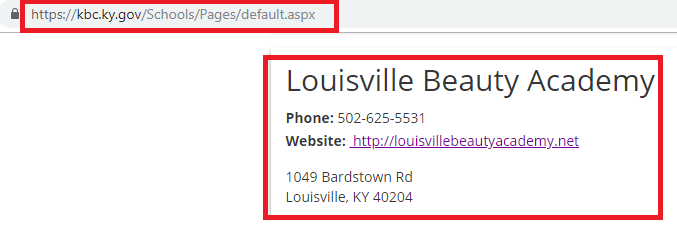
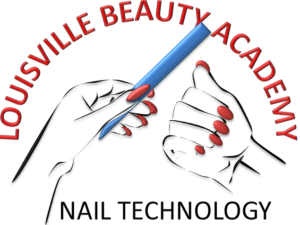 State Board of Cosmetology in Kentucky has reduced hour of Nail Technology required hours from 600 to 450 – that is equivalent to less than 3 months of school for full-time student (30-40 hours/week school attendance). This also means that at Louisville Beauty Academy, with our school more than 50% tuition off scholarship.
State Board of Cosmetology in Kentucky has reduced hour of Nail Technology required hours from 600 to 450 – that is equivalent to less than 3 months of school for full-time student (30-40 hours/week school attendance). This also means that at Louisville Beauty Academy, with our school more than 50% tuition off scholarship. 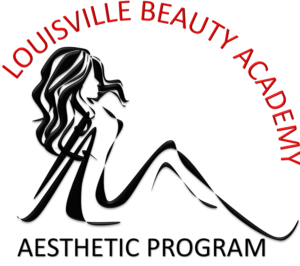 Louisville Beauty Academy is excited to announce that we NOW HAVE esthetic program available for immediate enrollment and start. Like all our programs, esthetic program students are available with similar more than 50% off tuition scholarship for all Full-Time student (less than $4000 tuition for entire program) with month by month payment plan. OUR SCHOOL IS STRUCTURED FOR THOSE WHO WORK, so affordability and flexibility are our slogan.
Louisville Beauty Academy is excited to announce that we NOW HAVE esthetic program available for immediate enrollment and start. Like all our programs, esthetic program students are available with similar more than 50% off tuition scholarship for all Full-Time student (less than $4000 tuition for entire program) with month by month payment plan. OUR SCHOOL IS STRUCTURED FOR THOSE WHO WORK, so affordability and flexibility are our slogan.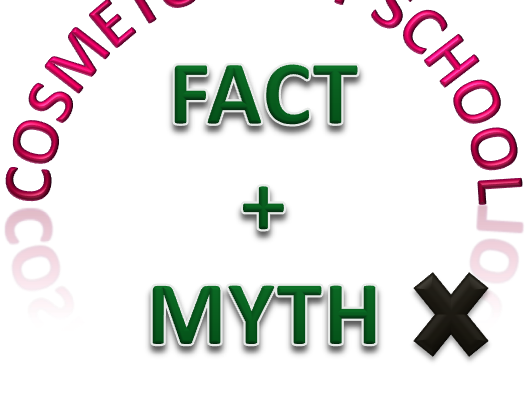
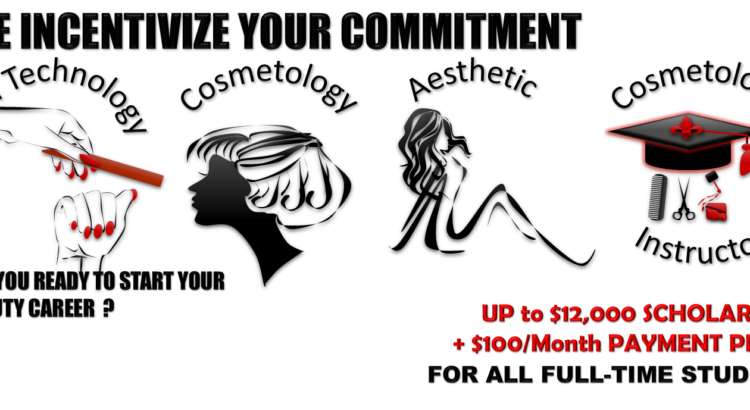
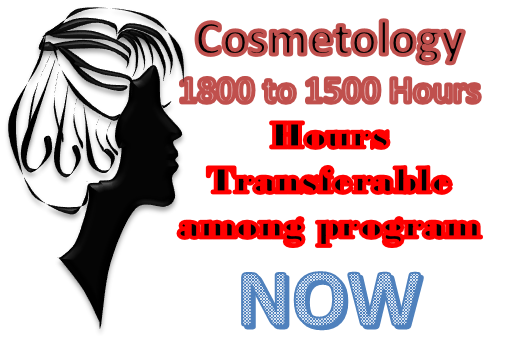

 Sự thu hút của ngành móng bắt nguồn từ hai khía cạnh chính: 1) sở hữu kinh doanh và 2) việc tìm việc nhanh và dễ dàng (Quách, Nguyễn, Doãn-Billings, Okahara, Fan, & Reynolds, 2008, Lý, & Tufts University, 2003 , Wahowiak, năm 2015). Trong vài thập kỷ qua, Quách, Nguyễn, Doan-Billings, Okahara, Fan và Reynolds, (2008) chỉ ra rằng quyền sở hữu và kinh doanh móng tay đã tăng gấp ba lần; Và đáng kể cho các tài khoản và bao gồm một số lượng lớn lao động nhập cư. Các kỹ thuật viên móng tay được ước tính của Việt Nam tăng lên 10 lần trong khoảng thời gian từ 1987 đến 2002 (Federman, Harrington, và Krynski, 2006).
Sự thu hút của ngành móng bắt nguồn từ hai khía cạnh chính: 1) sở hữu kinh doanh và 2) việc tìm việc nhanh và dễ dàng (Quách, Nguyễn, Doãn-Billings, Okahara, Fan, & Reynolds, 2008, Lý, & Tufts University, 2003 , Wahowiak, năm 2015). Trong vài thập kỷ qua, Quách, Nguyễn, Doan-Billings, Okahara, Fan và Reynolds, (2008) chỉ ra rằng quyền sở hữu và kinh doanh móng tay đã tăng gấp ba lần; Và đáng kể cho các tài khoản và bao gồm một số lượng lớn lao động nhập cư. Các kỹ thuật viên móng tay được ước tính của Việt Nam tăng lên 10 lần trong khoảng thời gian từ 1987 đến 2002 (Federman, Harrington, và Krynski, 2006). lao động được điều trị chân (NYT, 1910). Đối với tầng lớp cao hơn, những người có thu nhập lớn hơn; Các phương pháp thay thế và các dịch vụ làm móng tốt hơn được cung cấp tại tiệm salon Elizabeth Arden Red Door trong thời gian làm móng tay (Elizabeth Arden, 2015). Cũng trong thời gian đó, viết về cách làm móng đã bắt đầu phổ biến rộng rãi như những tác phẩm của Woodbury bao gồm: 1) Văn hoá sắc đẹp (Woodbury, 1910), và 2) Chăm sóc bàn tay (Woodbury, 1915).
lao động được điều trị chân (NYT, 1910). Đối với tầng lớp cao hơn, những người có thu nhập lớn hơn; Các phương pháp thay thế và các dịch vụ làm móng tốt hơn được cung cấp tại tiệm salon Elizabeth Arden Red Door trong thời gian làm móng tay (Elizabeth Arden, 2015). Cũng trong thời gian đó, viết về cách làm móng đã bắt đầu phổ biến rộng rãi như những tác phẩm của Woodbury bao gồm: 1) Văn hoá sắc đẹp (Woodbury, 1910), và 2) Chăm sóc bàn tay (Woodbury, 1915). Theo Tạp chí Nail, ngành mỹ phẩm làm móng là một trong những ngành phát triển nhanh nhất trong ngành làm đẹp có quy mô thị trường trên 7 tỷ đô la Mỹ (NAILS, 2010; NAILS, 2013). Mức tăng trưởng của nhân viên làm móng (kỹ thuật viên) được ước tính gần 20% từ năm 2008 đến năm 2018 (Walsh, 2012), vượt xa tốc độ tăng trưởng bình quân của các nghề khác trong phạm vi 10% (Lacey, & Wright, 2009); Khi những con số này có khả năng ở phía dưới của dự toán dựa trên Hợp tác Salon Nails của California Healthy Nails (2015).
Theo Tạp chí Nail, ngành mỹ phẩm làm móng là một trong những ngành phát triển nhanh nhất trong ngành làm đẹp có quy mô thị trường trên 7 tỷ đô la Mỹ (NAILS, 2010; NAILS, 2013). Mức tăng trưởng của nhân viên làm móng (kỹ thuật viên) được ước tính gần 20% từ năm 2008 đến năm 2018 (Walsh, 2012), vượt xa tốc độ tăng trưởng bình quân của các nghề khác trong phạm vi 10% (Lacey, & Wright, 2009); Khi những con số này có khả năng ở phía dưới của dự toán dựa trên Hợp tác Salon Nails của California Healthy Nails (2015). Các dịch vụ móng được thực hiện bởi chuyên viên làm móng, được gọi là kỹ thuật viên làm móng (Alaves, Sleeth, Thiese, & Larson, 2013, BBC, 2006; NAILS, 2010). Các kỹ thuật viên làm móng nói đến các chuyên gia được chính quyền bang cấp phép; Những người được kiểm tra và đồng ý thực hiện các thủ tục cấp phép làm móng (Walsh, 2012). Yêu cầu về cấp phép móng tay là khác nhau giữa các tiểu bang và tiểu bang; Nhưng quy trình nói chung bao gồm các yêu cầu như: 1) tuổi cơ bản, 2) mức độ y tế, 3) tiêu chuẩn giáo dục và 4) điểm kiểm tra hoặc kiểm tra tối thiểu (Walsh, 2012).
Các dịch vụ móng được thực hiện bởi chuyên viên làm móng, được gọi là kỹ thuật viên làm móng (Alaves, Sleeth, Thiese, & Larson, 2013, BBC, 2006; NAILS, 2010). Các kỹ thuật viên làm móng nói đến các chuyên gia được chính quyền bang cấp phép; Những người được kiểm tra và đồng ý thực hiện các thủ tục cấp phép làm móng (Walsh, 2012). Yêu cầu về cấp phép móng tay là khác nhau giữa các tiểu bang và tiểu bang; Nhưng quy trình nói chung bao gồm các yêu cầu như: 1) tuổi cơ bản, 2) mức độ y tế, 3) tiêu chuẩn giáo dục và 4) điểm kiểm tra hoặc kiểm tra tối thiểu (Walsh, 2012).


